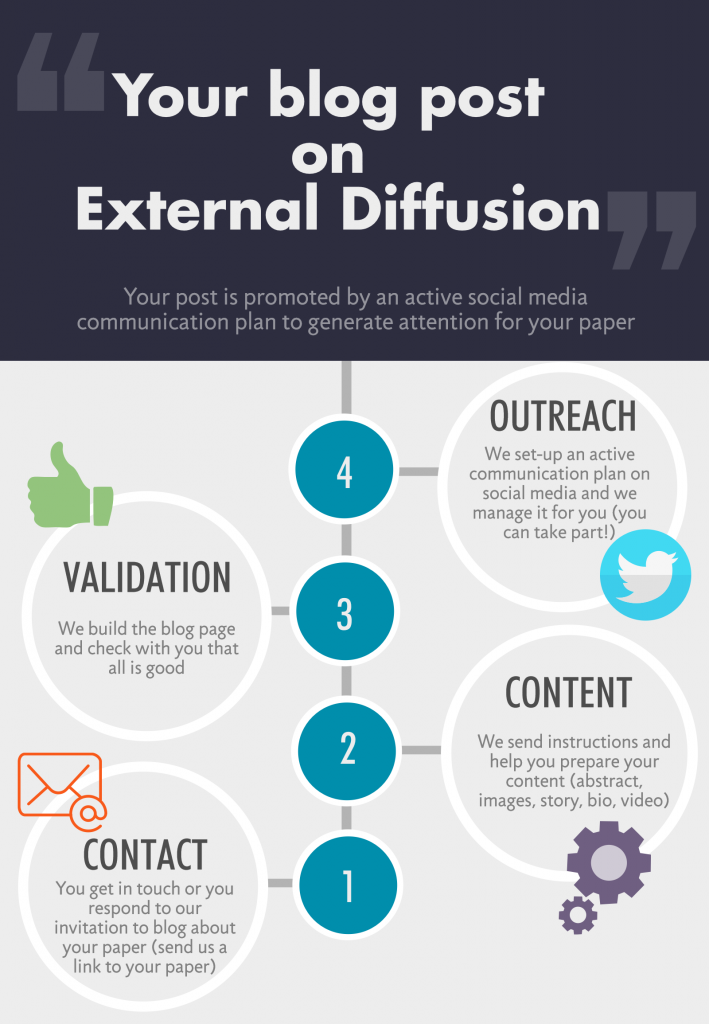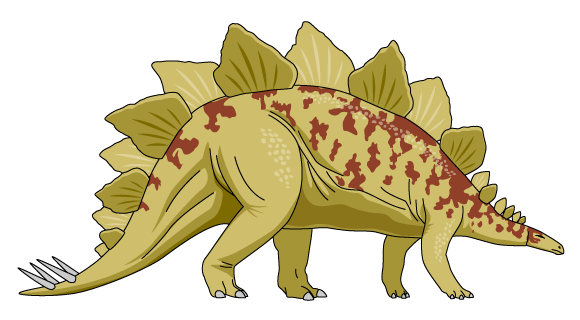“We consider that publishing a paper is not the endpoint for a scientist”. We did a little interview with External Diffusion about their work and how they are improving science communication. Check it out!
1. What was the turning point to found External Diffusion?
As a scientist, Damien felt the need to share his work in a different way, in addition to scientific papers and communications at conferences. He started a personal blog and began to be active on Twitter. Writing blog posts about scientific papers (his own or some other interesting piece found in the literature) was an exercise he enjoyed a lot. The point is to use alternative communication style, outside of the austere canvas of scholarly communication and avoiding its jargon. However, and despite outreach efforts, he realized by looking at the website stats that it was very tricky to get eyes on these articles.
In spring 2015, chatting with his brother, Alex, who is a web and social media entrepreneur, the idea arose: a web hub that would guarantee a relevant and massive audience for authors of science publications who want to blog their paper. Damien came up with all the things authors would love to benefit from. Alex came up with technical solutions and propositions to offer even more. Together, they designed the website and started recruiting the first contributors and followers on social media. The website was launched in October 2015.
2. How External Diffusion can help scientists to communicate their findings?
We consider that publishing a paper is not the endpoint for a scientist. Most researchers feel the need to talk about their findings in complementary ways. For examples, they go speak at conferences to make sure the community hears about their work. They sometimes use the services of the communication department at the university, to reach out to the general press. Some also communicate directly via social media. Blogging is yet another channel of science communication, dissemination, outreach, promotion (call it how you like). To make an impact via blogging, writing great content is not enough; you need a wide and relevant audience.
The External Diffusion blog post consists of a multi-section page that can host various types of engaging contents (infographics, illustration, multiple links, author biography, video, etc.). The content is provided by the author on the basis of a template we propose. If requested, we help with creating the contents. The strength of External Diffusion is the audience and the active social media outreach. Once the post is live on the website, we activate a true communication plan, to make sure the post and the article are discussed online by the relevant community.
3. How was the scientific community response to your work?
We started with a handful of posts and virtually no followers on social media. Now, we publish one post every week or so and the audience is growing very fast (e.g. > 5000 followers on Twitter). What is significant is the high engagement (RT, likes, etc.) rate that our social media posts generate and the number of “click through” towards the actual scientific paper that the authors want to promote. We receive a lot of positive comments from the community, and we are very happy about that!
4. What are the next steps for External Diffusion?
The next step for the development of the start-up is to establish a sustainable business model. We are looking for institutional partners – universities, research consortia, networks, etc. – who would like to benefit from our services on a regular basis. We want to continue build our social media audience. We will also soon propose fee-based services for the preparation of contents like infographics, illustrations, video, and popularization articles. Finally, we have a guest blog page where we publish external contributions on various topics related to science publishing and research; we plan to enrich this page to keep engaging the conversation with the community (propositions welcome!).
5. How do you imagine science communication will be in a couple of years?
Science communication has multiple forms. There will always be scientists who think that their papers “speak by themselves” and don’t need any additional form of outreach. And in some case it may indeed work for what they want to do. Yet, scholarly science communication is in the middle of a revolution: open access, open science, open data, preprints, post-publication peer review, collaborative publications, etc. Social media also multiplies information sources. In this flow of information, from the perspective of the scientific author, it will be more and more important to be able to stand out. Thus, managing online presence and e-reputation will be a must.
From the perspective of the science reader, who has to cope with the current information overload, reading science blogs is a good idea. In terms of communication forms, innovation is already there with interactive posters, social media chats and live videos, etc. Yet, we do believe that the good old paper will survive for long years because science communication is not only about conveying strong message; it is also about sharing methods and data in a precise and detailed manner so as to allow the community to build upon existing work and progress further. Probably, a mission of growing importance for science communicators will be to engage with the society, the media and even the political sphere to help rationalize biased science debates (migration, climate change, vaccines, etc.). Truncated messages can be easily conveyed in today’s communication frenzy and scientists must help debunk this.

Subscribe to our newsletter
Exclusive high quality content about effective visual
communication in science.






